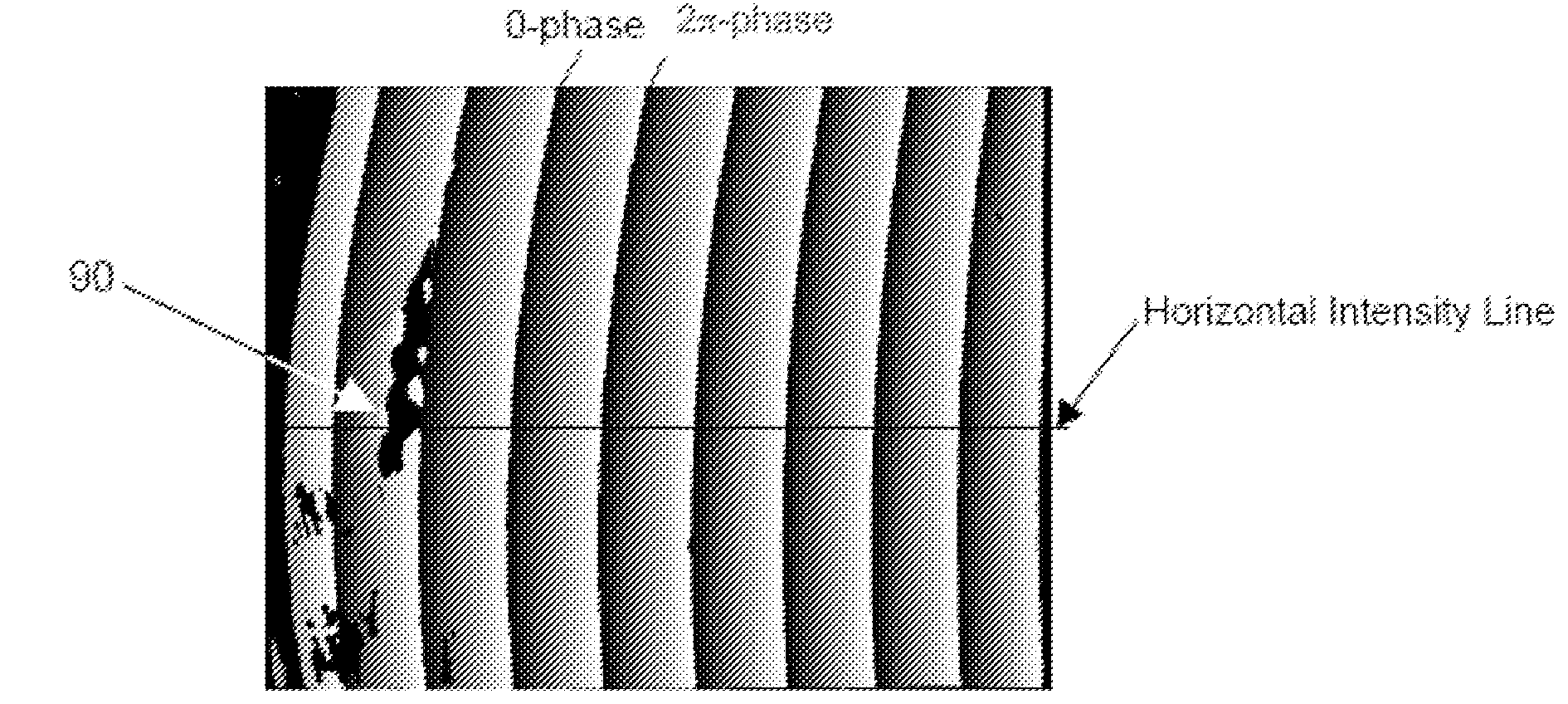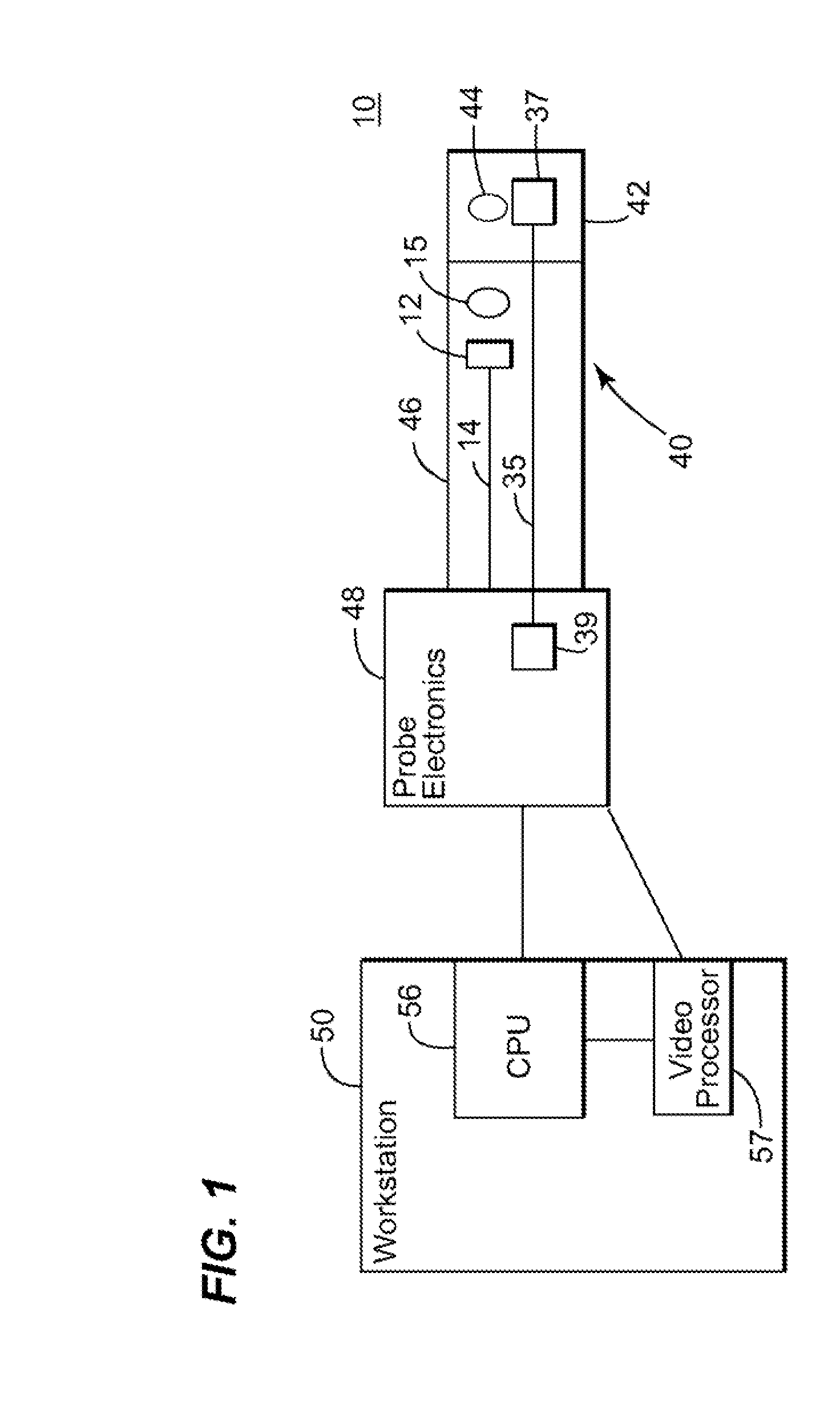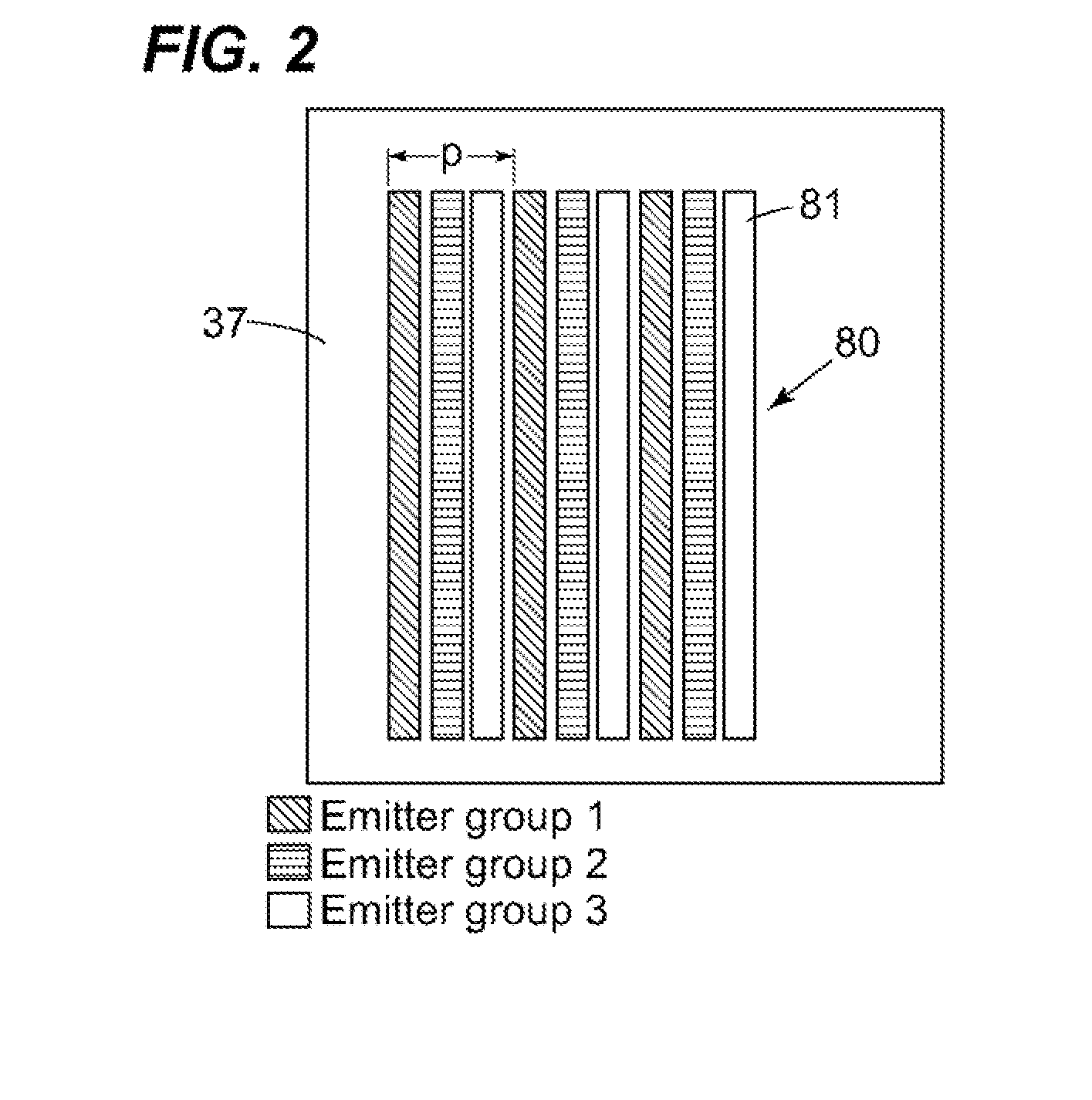Phase-Shift Analysis System and Method
a phase shift analysis and phase shift technology, applied in the field of borescopes and endoscopes, can solve the problems of time-consuming, indirect dimensional measurement, and insufficient information to produce a full 3d surface map
- Summary
- Abstract
- Description
- Claims
- Application Information
AI Technical Summary
Problems solved by technology
Method used
Image
Examples
Embodiment Construction
[0027]Illustrated in FIG. 1, a borescope / endoscope system 10 according to an embodiment of the invention is shown. An insertion tube 40 comprises elongated portion 46 and detachable tip 42. Distal tip 42 contains viewing optics 44 which is used in combination with probe optics 15 to guide and focus light from the surface or object (not shown) onto imager 12. The viewing optics may optionally include relay optics such as a lens or fiber optic system to remote the camera head away from the distal tip.
[0028]Imager 12 is included at the end of elongated portion 46 that is typically flexible, though it could be located proximally in other embodiments using a relay lens system or coherent fiber bundle to carry the image from the distal end to the proximal imager. Imager 12 may comprise, for example, a two-dimensional array of light-sensitive pixels that outputs a video signal in response to the light level sensed at each pixel. Imager 12 may comprise a charge-coupled device (CCD), complem...
PUM
 Login to View More
Login to View More Abstract
Description
Claims
Application Information
 Login to View More
Login to View More - R&D
- Intellectual Property
- Life Sciences
- Materials
- Tech Scout
- Unparalleled Data Quality
- Higher Quality Content
- 60% Fewer Hallucinations
Browse by: Latest US Patents, China's latest patents, Technical Efficacy Thesaurus, Application Domain, Technology Topic, Popular Technical Reports.
© 2025 PatSnap. All rights reserved.Legal|Privacy policy|Modern Slavery Act Transparency Statement|Sitemap|About US| Contact US: help@patsnap.com



